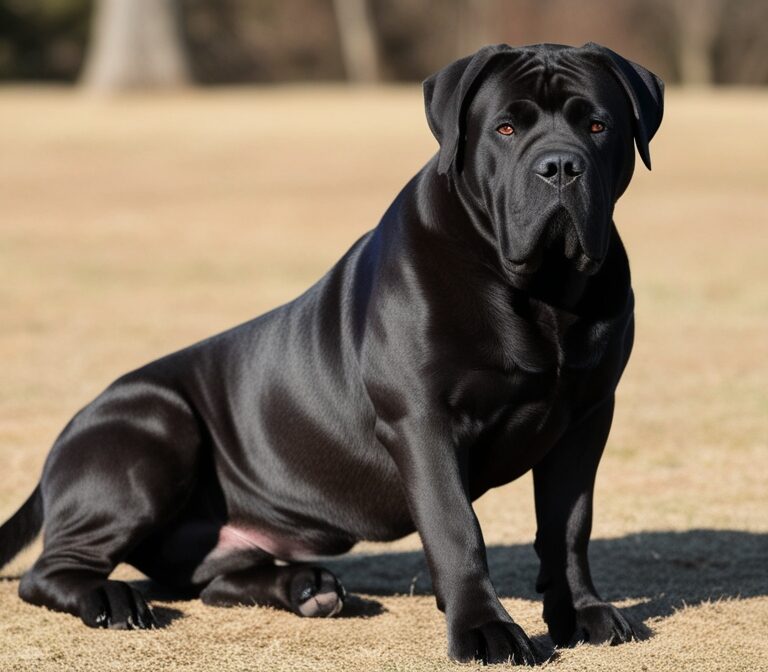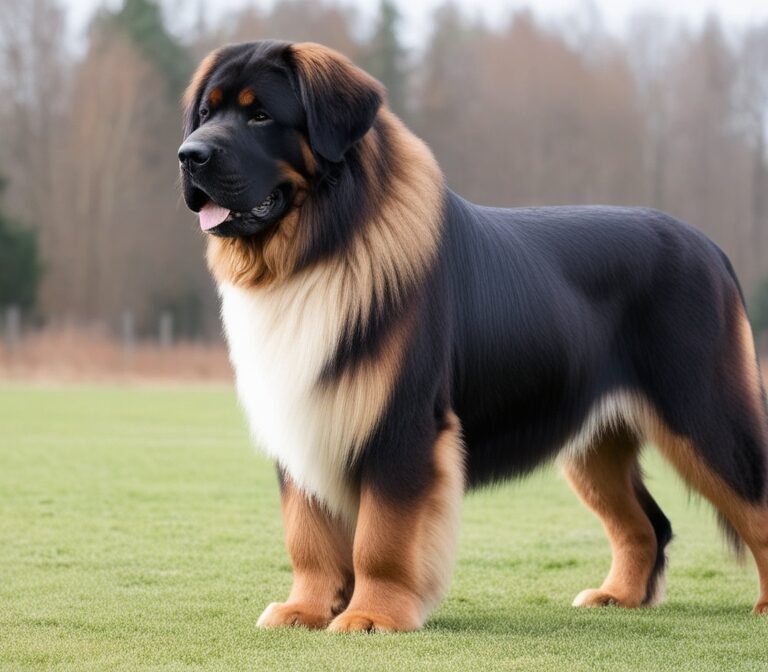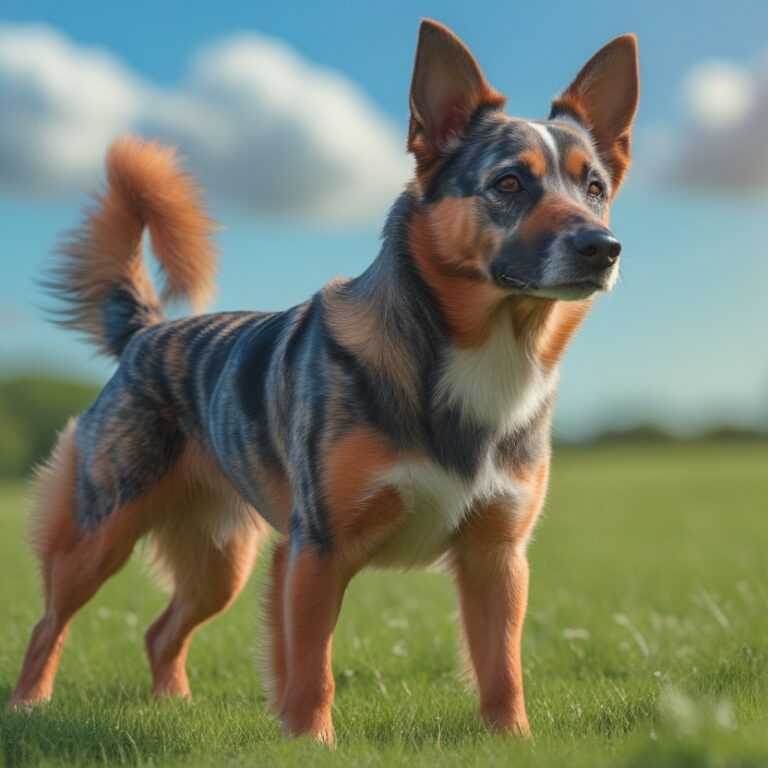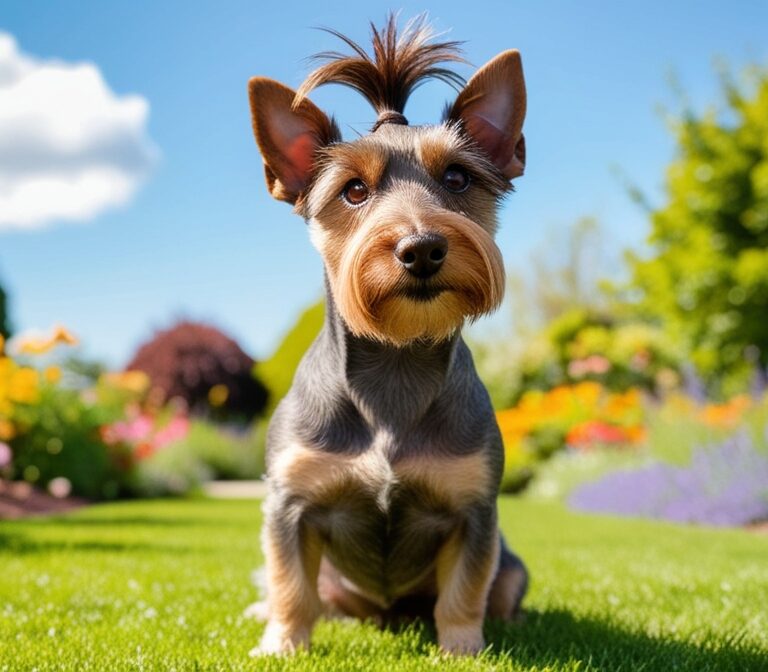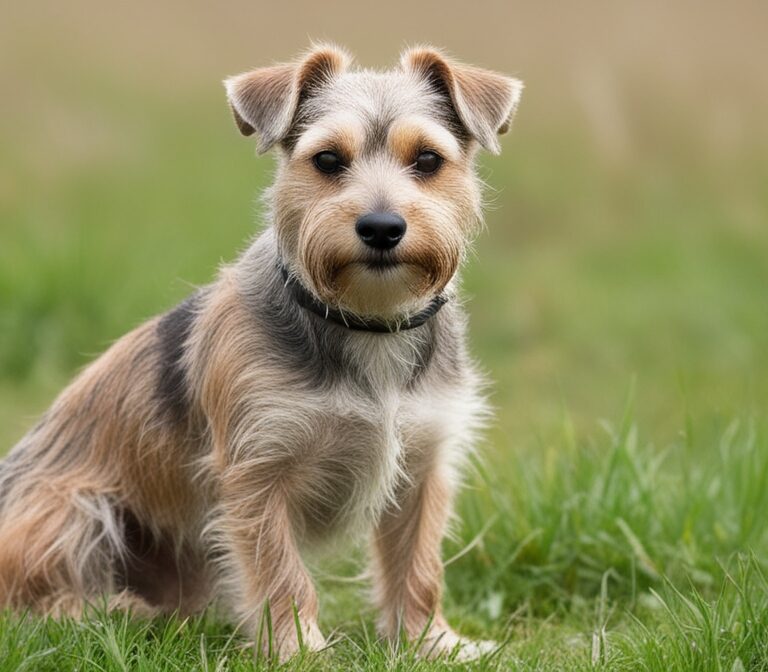German Pinscher: The Complete Guide to This Intelligent and Energetic Dog Breed
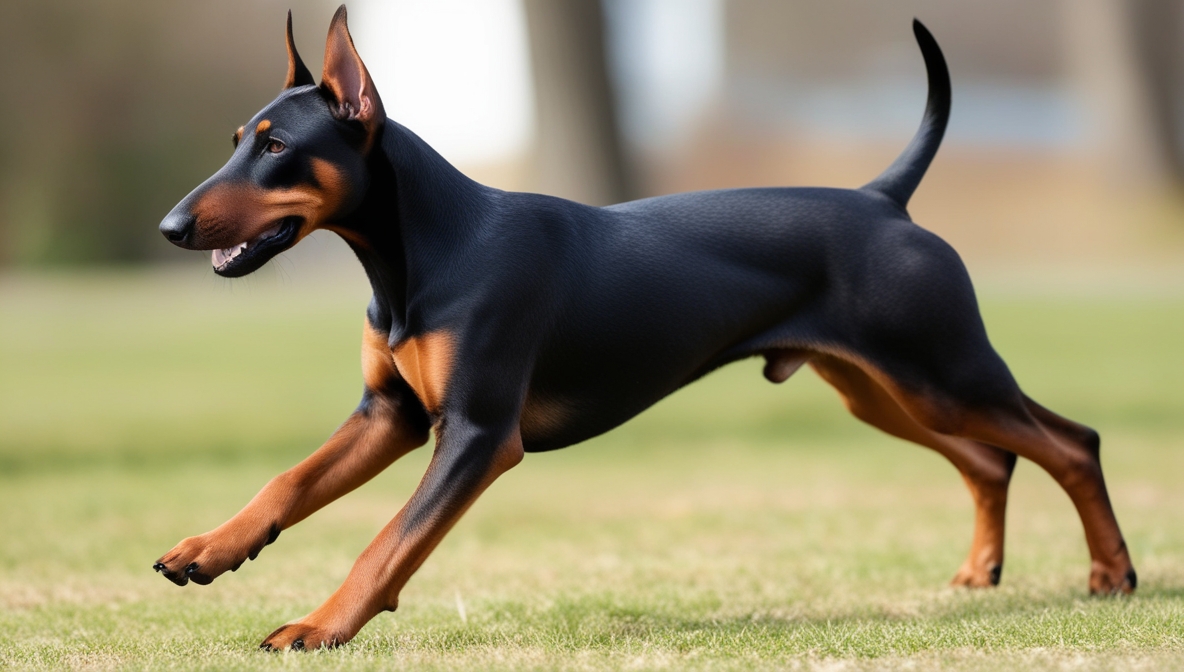
What is a German Pinscher?
The German Pinscher is a medium-sized dog breed from Germany, known for its intelligence, agility, and lively temperament. Classified as a working breed by the American Kennel Club (AKC) and Fédération Cynologique Internationale (FCI), the German Pinscher has a well-balanced body, short coat, and powerful presence.
This breed is often mistaken for the Doberman Pinscher due to its sleek, muscular appearance. However, the German Pinscher is a distinct, older breed with a history that predates the Doberman. They are highly valued as versatile working dogs, excelling in roles such as guarding, herding, and companionship.
Unlike some breeds that are content with a sedentary lifestyle, the German Pinscher thrives in an environment that offers consistent exercise, mental stimulation, and strong human interaction. Owners often describe them as both affectionate family dogs and alert watchdogs who remain deeply loyal to their households.
The German Pinscher’s temperament can be summed up as intelligent, lively, loving, and even-tempered—qualities that make them suitable for active families and individuals who appreciate a challenge in dog ownership.
In short, the German Pinscher is not a breed for everyone, but for those willing to commit to its exercise and training needs, it offers a rewarding blend of loyalty, protection, and companionship.
Quick Breed Facts at a Glance
When researching the German Pinscher, many potential owners want a snapshot of key characteristics before diving into detailed information. Below is a concise overview:
- Breed Category: Working / Utility Dog
- Origin: Germany
- Average Height: 17 – 20 inches (43 – 51 cm)
- Weight Range: 25 – 45 pounds (11 – 20 kg)
- Coat: Short, dense, smooth
- Colors: Black & Tan, Red, Blue, Isabella (fawn)
- Temperament: Intelligent, lively, loyal, protective, even-tempered
- Energy Level: High
- Average Lifespan: 12 – 14 years
- Recognized By: AKC, FCI, UKC, Canadian Kennel Club
- Common Uses: Guarding, ratting (historical), agility sports, companionship
This quick reference highlights why the German Pinscher is appealing to active households, dog sports enthusiasts, and people looking for a reliable watchdog. Their balance of athleticism and affectionate behavior makes them stand out among medium-sized dog breeds.
Origins of the German Pinscher
The German Pinscher has deep roots in Central Europe, specifically Germany, where it emerged as one of the foundational breeds of the Pinscher family. Historical records suggest that the breed developed in the 17th and 18th centuries as a farm dog and ratter. Farmers relied on them to control vermin, herd livestock, and protect property.
Unlike ornamental dogs bred for looks, the German Pinscher’s evolution was shaped by functionality and performance. These dogs needed to be agile enough to chase rats, brave enough to deter intruders, and loyal enough to bond with their human families.
One of the most fascinating facts about this breed is its role in the development of other well-known dogs, including the Doberman Pinscher, the Miniature Pinscher, and possibly the Rottweiler. This makes the German Pinscher a progenitor breed—an essential link in the history of European working dogs.
Unfortunately, the breed nearly went extinct in the early 20th century, largely due to World War I and World War II, which devastated dog populations across Europe. Thanks to the dedicated efforts of breeders such as Werner Jung, the German Pinscher was revived and preserved, preventing its disappearance.
Today, the German Pinscher is recognized globally, although it remains less common than the Doberman or Miniature Pinscher. Enthusiasts value it as a living connection to Europe’s working-dog heritage.
Development in Germany
In Germany, the Pinscher-Schnauzer Club (PSK) played a crucial role in standardizing the breed. Established in 1895, the club documented and refined the breed standard, emphasizing traits like strength, endurance, and intelligence.
The name “Pinscher” itself is believed to come from the German verb “pinschen”, meaning “to seize or bite”, referencing its original role as a vermin hunter. Over time, the breed’s working abilities expanded to include guarding stables, protecting merchants, and serving as loyal companions.
During the industrial revolution, as cities expanded, German Pinschers adapted from farm work to urban environments, where their compact yet athletic frame proved valuable for guarding warehouses and family homes.
The breed faced significant challenges during the 20th century. By the end of World War II, only a handful of purebred German Pinschers remained. The recovery effort involved careful breeding programs that emphasized health, temperament, and working ability.
Today, in Germany and beyond, the German Pinscher is admired as a symbol of resilience and versatility. Though not as globally famous as some relatives, it remains a cherished heritage breed among enthusiasts.
Role in Working and Guarding
The German Pinscher was never a decorative lapdog—it was bred for serious work. On farms, it excelled at rat hunting, protecting food supplies from rodents, much like the Terrier breeds in England. Unlike Terriers, however, the German Pinscher was also bred for guarding, giving it a more versatile role.
Their protective instincts made them excellent watchdogs, capable of alerting families to strangers while maintaining enough discernment not to bark unnecessarily. This balance of vigilance without excessive aggression is a defining trait of the breed.
Historically, German Pinschers also accompanied traders and farmers on journeys, providing security against thieves and wild animals. Their medium size allowed them to be both strong and manageable—big enough to intimidate, yet compact enough to travel easily.
Today, while modern households may not need a dog to protect grain stores or travel caravans, the German Pinscher’s working instincts remain intact. Many owners find them excelling in dog sports such as agility, obedience, and rally trials, which provide a modern outlet for their energy and intelligence.
The working heritage of the German Pinscher explains why they require consistent training and structured activity. Without it, they may develop behavioral issues such as restlessness, digging, or chewing. Properly channeled, however, their working drive transforms into loyalty, protection, and companionship.
German Pinscher Size and Weight
The German Pinscher falls into the medium-sized dog breed category, with a strong yet elegant build that balances power, speed, and agility. According to the American Kennel Club (AKC) standard, the ideal height ranges from 17 to 20 inches (43–51 cm) at the shoulder. Weight typically falls between 25 to 45 pounds (11–20 kg), depending on sex, bone structure, and overall body condition.
Unlike heavier working dogs such as the Rottweiler or the Doberman, the German Pinscher has a leaner, more compact body, which contributes to its athleticism. This size makes them highly adaptable—they are large enough to deter intruders and small pests, yet compact enough to live in apartments or smaller homes, provided they receive adequate exercise.
One of the defining aspects of this breed’s size is its proportional balance. The body is slightly longer than tall, with a straight, firm back and well-developed muscles. The chest is moderately broad and deep, allowing ample lung capacity, while the waist tucks up to create an impression of agility and speed.
Size consistency is important in maintaining breed standards. Overly large German Pinschers risk losing their agility, while undersized ones may lack the guarding presence that defines the breed’s utility. Responsible breeders strive to produce dogs that meet the middle of the size standard, ensuring both workability and health.
For prospective owners, understanding this size and weight range helps determine whether a German Pinscher is suitable for their household. A dog in the 40-pound range may not fit comfortably in a small, sedentary family home, but an active owner will find the breed’s manageable size perfect for exercise, training, and companionship.
Coat Colors and Texture
The coat of the German Pinscher is one of its most striking features. Short, smooth, and dense, it lies close to the body, providing protection without requiring extensive grooming. The coat texture is firm to the touch but sleek enough to highlight the breed’s muscular frame.
Recognized coat colors include:
- Black & Tan – The most iconic variation, with a jet-black base coat and sharply defined rust markings above the eyes, on the muzzle, chest, legs, and under the tail.
- Solid Red – Ranging from light stag-red to deep dark red, this variation gives the dog a sleek, uniform appearance.
- Blue – A rarer color, where the coat appears as a diluted steel-gray shade, often paired with tan markings.
- Isabella (Fawn) – Another dilution color, lighter than red, often with tan markings.
These colors are officially recognized by the AKC and FCI breed standards, ensuring breeders maintain genetic consistency. White markings are not desirable in this breed and are considered a deviation from standard.
The short coat requires minimal maintenance compared to long-haired breeds. Weekly brushing with a rubber grooming mitt helps remove dead hair and keep the coat shiny. Despite its low-maintenance appeal, owners should note that German Pinschers are not hypoallergenic. They do shed, though moderately, and may not be ideal for allergy-sensitive households.
The coat also offers practical advantages. It dries quickly, resists dirt, and allows the dog to move freely in varied terrains—qualities essential for a working breed. However, the lack of an insulating undercoat means German Pinschers may need protection in colder climates, such as a dog sweater or coat during winter walks.
Distinguishing Features Compared to Other Pinschers
The German Pinscher often draws comparisons to its relatives, especially the Doberman Pinscher and the Miniature Pinscher. While similarities exist, key differences distinguish this breed:
- German Pinscher vs Doberman Pinscher
The Doberman is significantly larger, often weighing between 60–100 pounds. German Pinschers are more compact, with a medium build that emphasizes agility over sheer power. Historically, the Doberman was developed using the German Pinscher as one of its foundation breeds, but selective breeding created a taller, more imposing dog for guarding and police work. - German Pinscher vs Miniature Pinscher
The Miniature Pinscher is not a scaled-down version of the German Pinscher, though many assume so. Minis are toy dogs weighing only 8–12 pounds, with a more delicate frame. In contrast, the German Pinscher is sturdier and more versatile as a working dog. Both share similarities in appearance, such as erect ears (when cropped) and sleek coats, but their purposes differ drastically—the German Pinscher being a farm and guard dog, the Miniature Pinscher a companion. - German Pinscher vs Standard Schnauzer
Interestingly, the Standard Schnauzer shares ancestry with the German Pinscher. The two breeds diverged when breeders focused on coat type: the Schnauzer developed a rough, wiry coat and distinctive beard, while the Pinscher retained its smooth coat.
Other distinguishing traits of the German Pinscher include:
- Head Shape: Strong, elongated head with a flat skull and pronounced stop.
- Ears: Naturally v-shaped and folded, though cropped ears are seen in some regions.
- Tail: Often docked in countries where permitted, carried high when natural.
- Expression: Alert and intelligent, with dark, oval-shaped eyes.
The German Pinscher’s look is one of refined athleticism—not as imposing as the Doberman, but not as delicate as the Miniature Pinscher. Its distinguishing balance of strength, elegance, and agility makes it stand out in the Pinscher family.
Is the German Pinscher Right for You?
Choosing a German Pinscher as a companion requires careful consideration of its temperament, energy level, and lifestyle needs. This breed is best suited for active individuals or families who can provide daily physical exercise and consistent training. A minimum of 60–90 minutes of structured activity per day—such as running, agility, or interactive play—is essential to keep the dog balanced and content.
The German Pinscher is not an ideal choice for first-time dog owners who want a low-maintenance pet. Its high intelligence can lead to stubbornness if training is inconsistent, and its strong guarding instincts demand an owner capable of providing leadership. However, for experienced handlers, this same intelligence translates into quick learning and exceptional performance in obedience, tracking, and dog sports.
Families with children often find German Pinschers to be affectionate and protective, provided they are socialized early. They bond deeply with their household and may become territorial toward strangers, making them excellent watchdogs. That said, supervision with small children is recommended, since their high energy levels can unintentionally overwhelm toddlers.
Apartment living is possible for the breed, but only if paired with daily outdoor activities. Without enough exercise, German Pinschers may develop restlessness, destructive chewing, or excessive barking. Owners who enjoy an active lifestyle—running, hiking, or cycling—will find this breed a perfect companion.
If your household is ready for a medium-sized, energetic, loyal, and protective breed, the German Pinscher is an outstanding choice. If not, you may find the demands of this dog overwhelming, and another, more relaxed breed may be a better fit.
Final Thoughts on This Unique Breed
The German Pinscher is a breed of remarkable history, versatility, and resilience. Emerging from Germany centuries ago as a working farm dog and ratter, it nearly faced extinction but was revived thanks to dedicated breeders. Today, it stands as a living link to Europe’s canine heritage and a cornerstone in the development of breeds like the Doberman Pinscher and the Miniature Pinscher.
Physically, the German Pinscher combines strength and elegance in a medium-sized frame, marked by its sleek coat and alert expression. Its temperament blends intelligence, loyalty, and protectiveness, making it both a loving family member and a formidable watchdog. These traits explain why the breed is increasingly appreciated among active households, dog sport enthusiasts, and experienced owners seeking a versatile companion.
The breed’s training and exercise requirements cannot be overstated. It thrives on challenges, both mental and physical, and requires a committed owner to bring out its full potential. Grooming and maintenance are minimal, but socialization, obedience training, and structured exercise are non-negotiable.
Ultimately, the German Pinscher is not just a pet—it is a partner, guardian, and loyal friend. For those who can meet its needs, the rewards are immense: a dog that offers protection, affection, and unwavering loyalty. For dog lovers who value intelligence, elegance, and energy, the German Pinscher is a breed that truly stands out.
